Managing employee schedules can be a complex task, especially when you have a large workforce or multiple shifts to coordinate. A monthly employee schedule can help simplify this process and provide numerous benefits for both employers and employees.
In this article, we will explore the importance of a monthly employee schedule, how to create one, and provide tips for successful implementation.
What is a Monthly Employee Schedule?
A monthly employee schedule is a document that outlines the work shifts and hours for each employee over a month-long period. It helps ensure consistent staffing by clearly indicating when employees are expected to work and allows employers to plan by providing a long-term view of staffing needs and deadlines.
Employees can also benefit from a monthly employee schedule as it enables them to plan their personal lives around their work schedule.
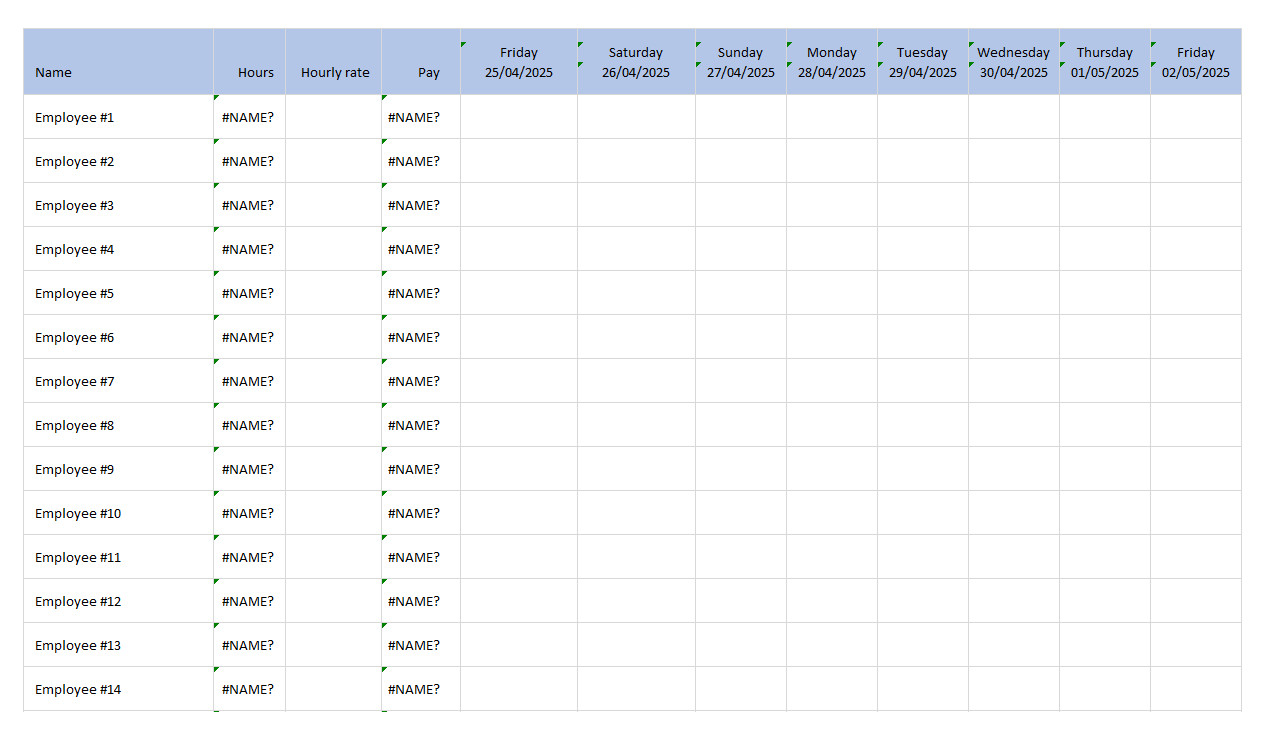
Why is a Monthly Employee Schedule Important?
A monthly employee schedule is important for several reasons:
- Consistent Staffing: By having a clear schedule in place, employers can ensure that there are no gaps or overlaps in employee coverage. This helps maintain a consistent level of staffing, which is essential for the smooth operation of any business.
- Planning: With a monthly schedule, employers can anticipate staffing needs well in advance. This allows them to make necessary arrangements, such as hiring additional staff or adjusting shifts, to meet any upcoming demands or deadlines.
- Employee Satisfaction: A monthly employee schedule provides employees with a sense of stability and predictability. They can plan their personal lives, such as appointments or family commitments, around their work schedule, leading to increased job satisfaction.
- Optimized Workflows: By having a long-term view of staffing needs and deadlines, employers can optimize workflows. They can allocate resources more efficiently, avoid overworking employees, and ensure that tasks are completed on time.
How to Create a Monthly Employee Schedule
Creating a monthly employee schedule requires careful planning and consideration. Here are the steps to follow:
- Assess Staffing Needs: Start by analyzing your business’s demand and determining the number of employees required for each shift or day. Consider factors such as peak hours, customer flow, and workload.
- Create Shift Patterns: Design shift patterns that meet the staffing needs while ensuring fairness and compliance with labor laws. Consider factors like employee preferences, availability, and skill sets.
- Assign Employees: Assign employees to specific shifts based on their availability and qualifications. Consider their preferences, skills, and any special requests or accommodations.
- Communicate the Schedule: Once the schedule is finalized, ensure that it is communicated effectively to all employees. Provide them with a copy and make it easily accessible, such as through email or a shared online platform.
- Monitor and Adjust: Regularly monitor the schedule to ensure its effectiveness. Be open to feedback from employees and make necessary adjustments to address any issues or conflicts that may arise.
Examples of Monthly Employee Schedules
Here are a few examples of how a monthly employee schedule can be structured:
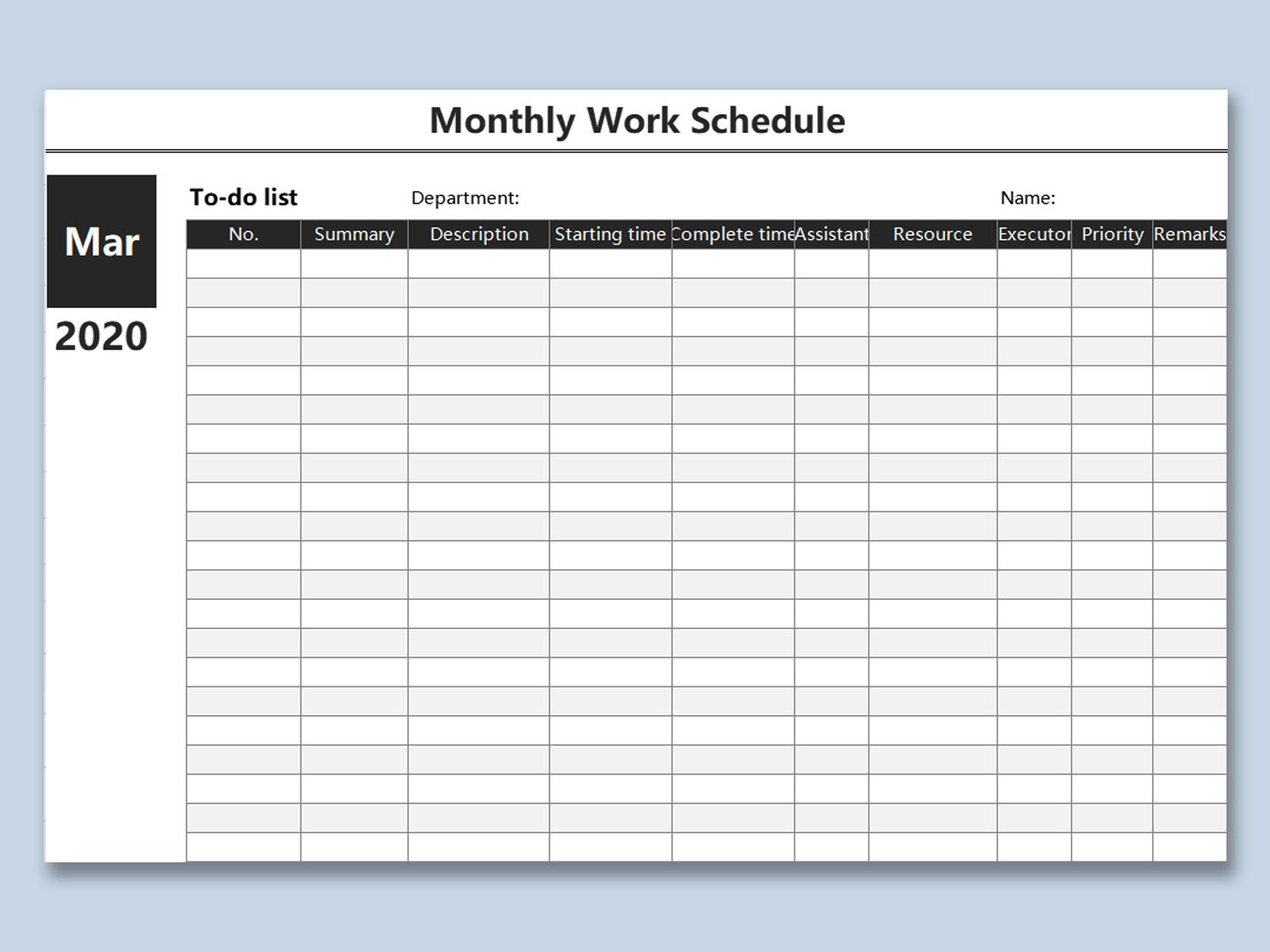
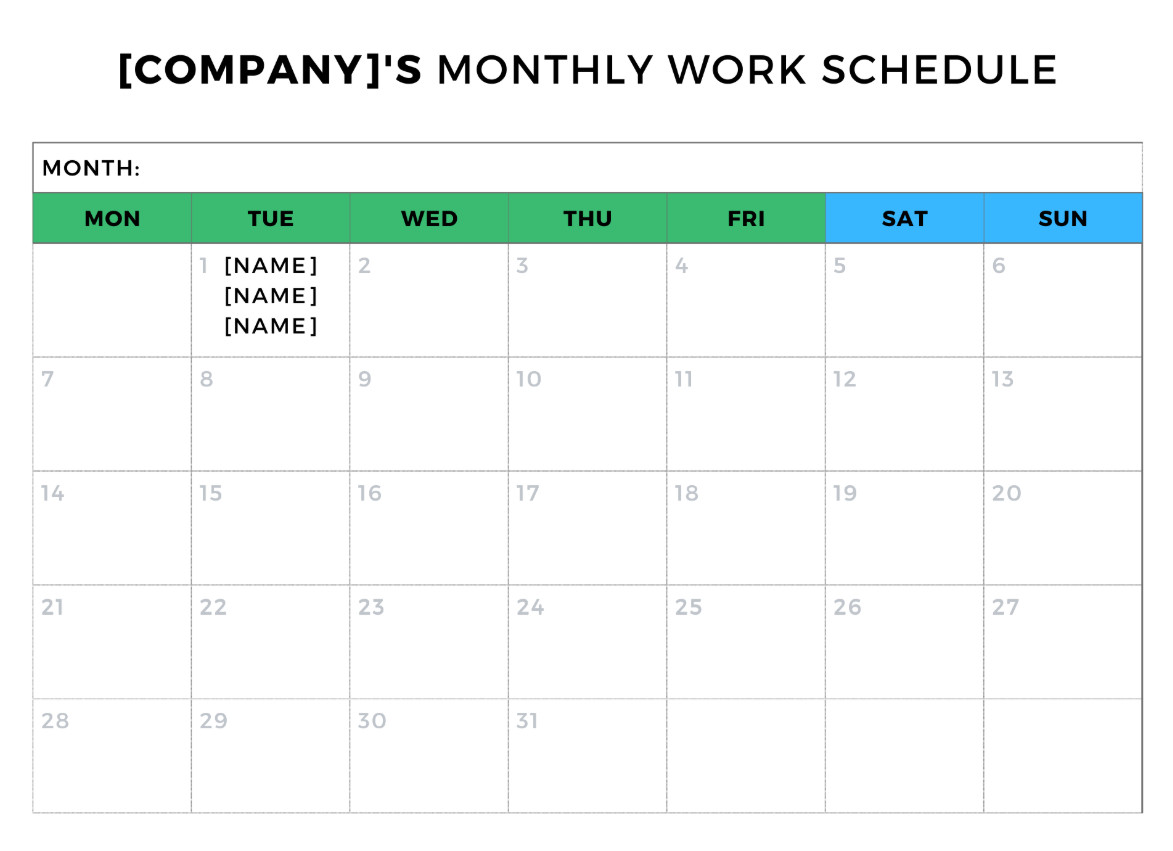
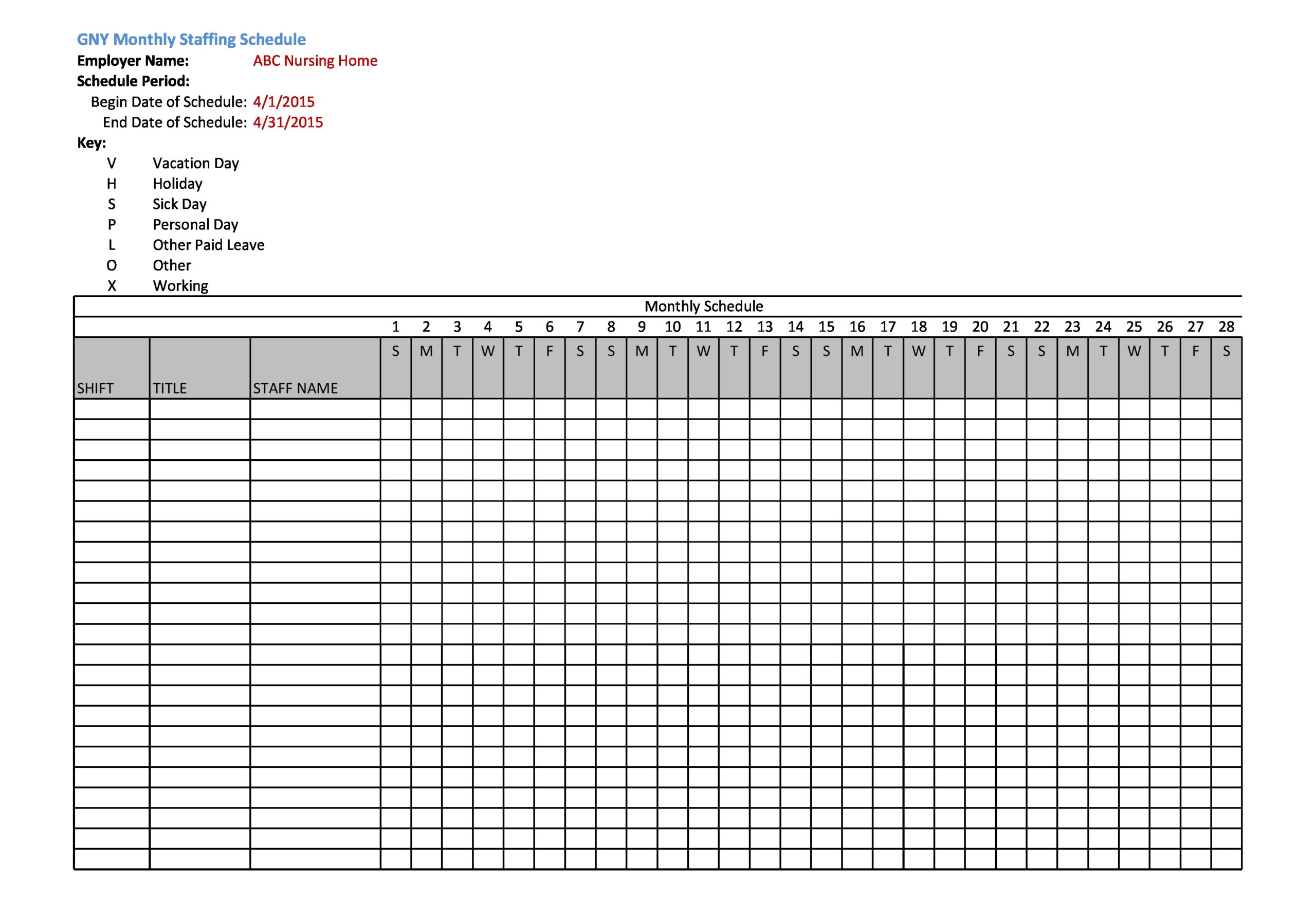
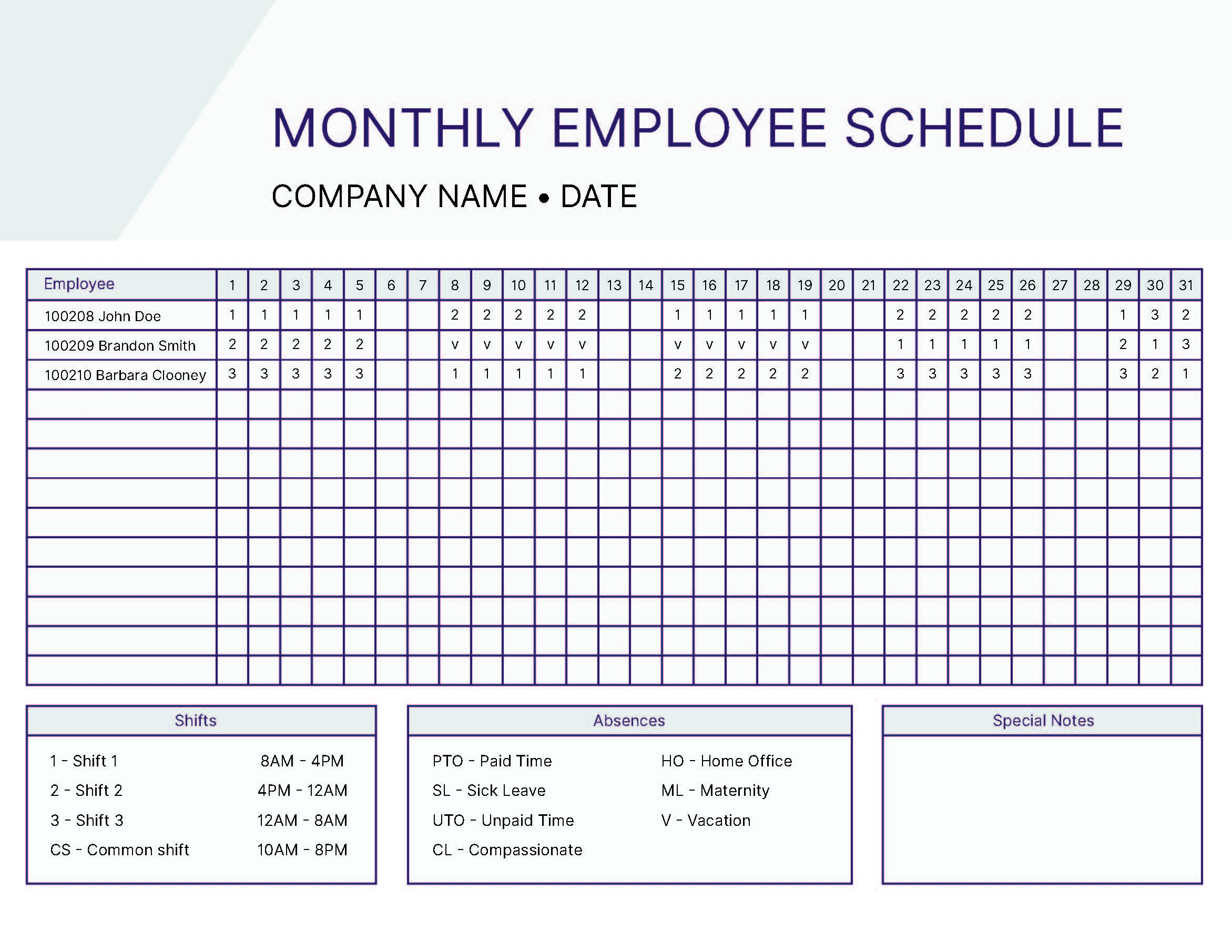
Tips for Successful Implementation
Implementing a monthly employee schedule can be a smooth process if you follow these tips:
- Involve Employees: Seek input from employees when creating the schedule. Take into account their preferences, availability, and any personal commitments or requests.
- Be Fair and Transparent: Ensure that the schedule is fair and transparent. Avoid favoritism or discrimination, and communicate the criteria used for shift assignments.
- Provide Ample Notice: Give employees sufficient notice of their shifts, ideally at least two weeks in advance. This allows them to plan their personal lives accordingly.
- Consider Workload: When creating the schedule, consider the workload for each shift and avoid overburdening employees. Distribute tasks evenly and account for breaks and rest periods.
- Monitor Employee Availability: Regularly update and review employee availability. Keep track of any changes or time-off requests to ensure accurate scheduling.
- Use Technology: Consider using employee scheduling software or online platforms to streamline the scheduling process. These tools can help automate tasks, track employee hours, and facilitate communication.
- Be Flexible: Recognize that unexpected changes may occur, such as employee absences or changes in demand. Be prepared to adjust the schedule as needed and have contingency plans in place.
- Solicit Feedback: Encourage employees to provide feedback on the schedule. Actively listen to their concerns or suggestions and make necessary improvements to enhance employee satisfaction and productivity.
Conclusion
A monthly employee schedule is a valuable tool for businesses to ensure consistent staffing, enable employees to plan, and optimize workflows.
By creating a well-structured schedule, involving employees in the process, and implementing best practices, businesses can effectively manage their workforce and enhance overall productivity and job satisfaction.
Monthly Employee Schedule Template – Download